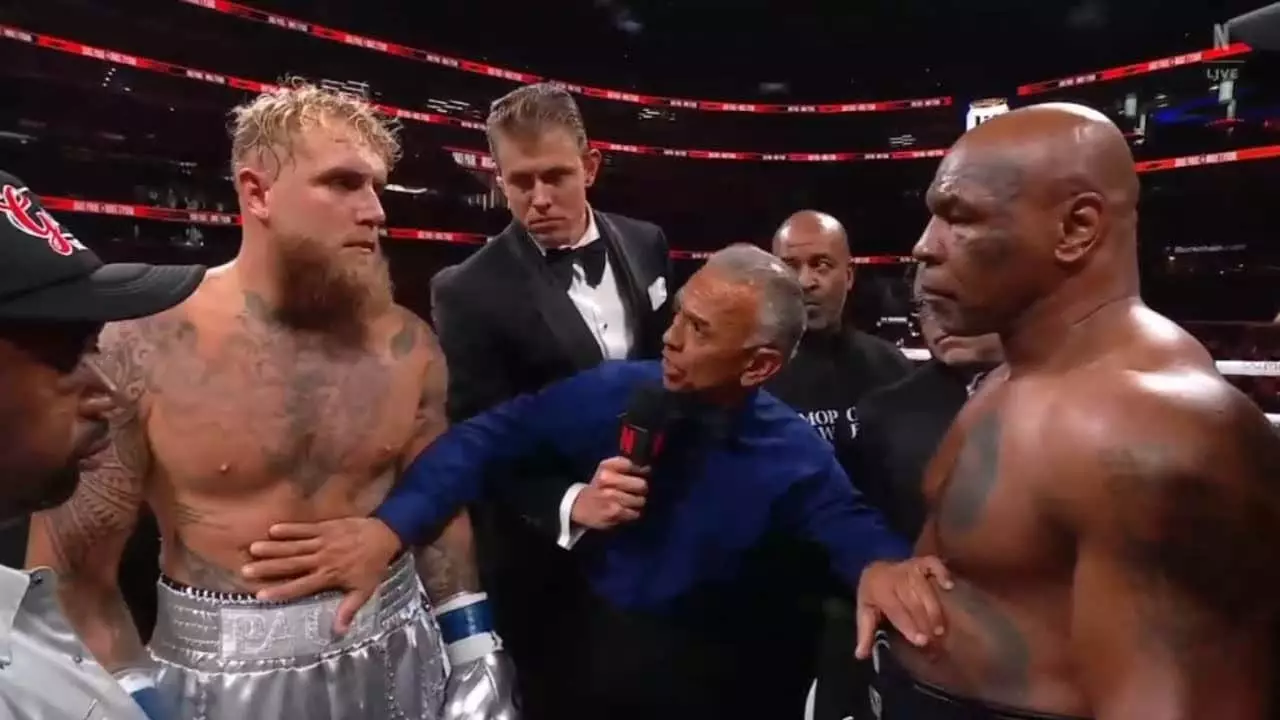Boxing has been a prominent fixture in the world of sports, characterized by its exceptional athletes and gripping narratives. Legendary figures like Muhammad Ali, Mike Tyson, and Floyd Mayweather have not only defined the sport but have also evolved into culturally resonant icons. In an era marked by heightened competition and a plethora of entertainment choices, however, boxing faces a significant challenge: its stars often struggle to maintain visibility and relevance. As fans gravitate towards more frequent and engaging content, the once-vibrant allure of boxing risks fading in a landscape replete with alternatives.
Recent high-profile boxing matches, such as Tyson Fury’s exhibition against Francis Ngannou and Jake Paul’s celebrity-driven fights, serve as reminders of the sport’s ongoing appeal. Fury and Paul, albeit with differing levels of athleticism and credibility, have demonstrated the ability to generate buzz and fill venues through their captivating event promotions. Nevertheless, relying on a handful of sporadic “superfights” is insufficient to ensure boxing’s longevity in the competitive sports arena. Genuine stars like Gervonta Davis, Terence Crawford, and Saul “Canelo” Alvarez must actively collaborate to bolster the sport’s presence and viability.
Today, boxing is not just vying for attention against other combat sports like mixed martial arts (MMA); it is also competing in a saturated entertainment market filled with major leagues like the NFL and NBA, alongside the incessant streams of content from various digital platforms. In this cluttered environment, a lack of visibility translates to diminished relevance. The UFC has successfully upheld a constant spotlight through well-orchestrated events throughout the year, keeping fighters’ names and faces fresh in the minds of fans. Conversely, boxing’s elite athletes frequently partake in limited bouts each year, resulting in extended periods of inactivity that can lead to audience disengagement.
Fans are unlikely to recognize prominent boxing names such as Crawford or Davis in the same breath as MMA stars like Conor McGregor or Israel Adesanya, who benefit from significant promotion and storytelling efforts. The disconnection between boxing’s elite fighters and their audience underscores a pressing need for enhanced engagement strategies.
The electrifying encounters that boxing can produce are testament to the sport’s enduring appeal. Gervonta Davis’s showdown with Ryan Garcia and Terence Crawford’s notable victory over Errol Spence showcased the potential for spectacular action and dramatic narratives. Yet, these monumental events remain too infrequent. The pervasive risk lies in boxing’s icons becoming perceived as seasonal attractions rather than regular participants in the sport’s evolution. Despite Canelo Alvarez’s comparatively frequent match schedule, he faces heightened difficulty in securing intriguing opponents that excite both casual and die-hard fans.
Despite some perceiving Jake Paul as a sideshow, dismissing his influence would be a grave oversight. Paul’s willingness to consistently step into the ring, coupled with his aggressive self-promotion and ability to generate intrigue, has proven effective in rejuvenating interest in boxing among younger demographics. His approach illustrates that innovation and charisma can transcend traditional skill set expectations in maintaining relevance. This dramatic reinvention of promotion stands in stark contrast to some established fighters, who, while undoubtedly skilled, exhibit a degree of detachment from contemporary media modalities.
Boxers like Crawford and Davis would benefit from adopting similar tactics—using platforms such as social media to capture and retain fan interest between fights. This strategic engagement is vital for keeping boxing in the conversation and enhancing its overall appeal.
To rekindle interest in boxing, its champions must participate in fights more frequently and be willing to face challenging opponents. This necessitates reducing the frequency of less meaningful tune-up bouts in favor of high-stakes clashes that capture public attention. The current trend of delaying anticipated matchups until they reach maximum profitability often results in disillusioned fans. For instance, the highly anticipated Crawford-Spence fight materialized far later than it should have, while other promising matchups like Davis vs. Shakur Stevenson face similar delays.
Increased activity not only benefits the fighters involved, but it also enriches the boxing landscape as a whole. Frequent appearances from top-tier fighters allow for the emergence of undercard talent and enable fans to maintain a vested interest in the sport.
Boxing possesses the foundational elements for prolonged success—exceptional athletes, thrilling stories, and a rich legacy. To leverage these assets for future prosperity, however, fighters such as Davis, Crawford, and Alvarez must become constant fixtures in the boxing narrative. They must embrace their roles not merely as adept athletes but also as entertainers who drive interest amid an evolving cultural landscape. In a world that’s constantly inundated with content, boxing’s megastars need to fight not only for championships but for the sustainability and vibrancy of the sport itself. Enhanced activity, better matchmaking, and innovative promotional strategies will ensure that boxing not only survives but flourishes in the modern sports ecosystem.


Leave a Reply